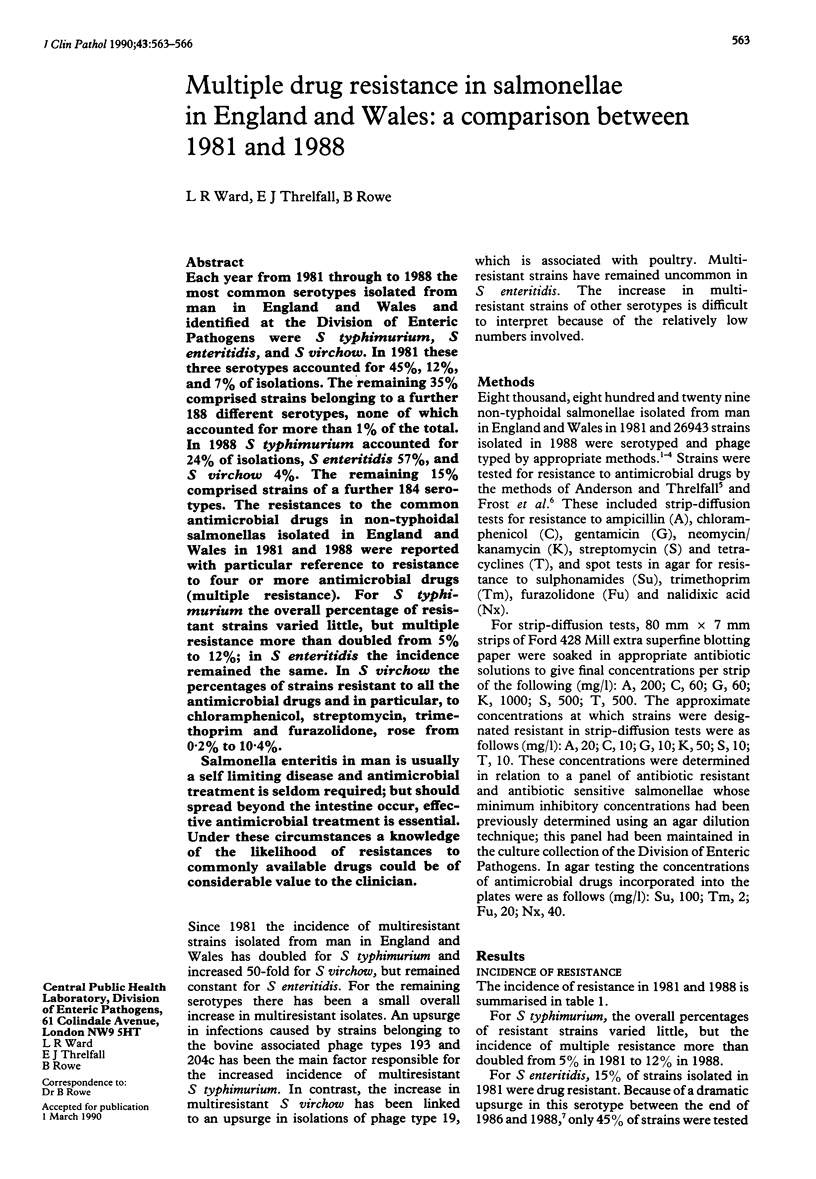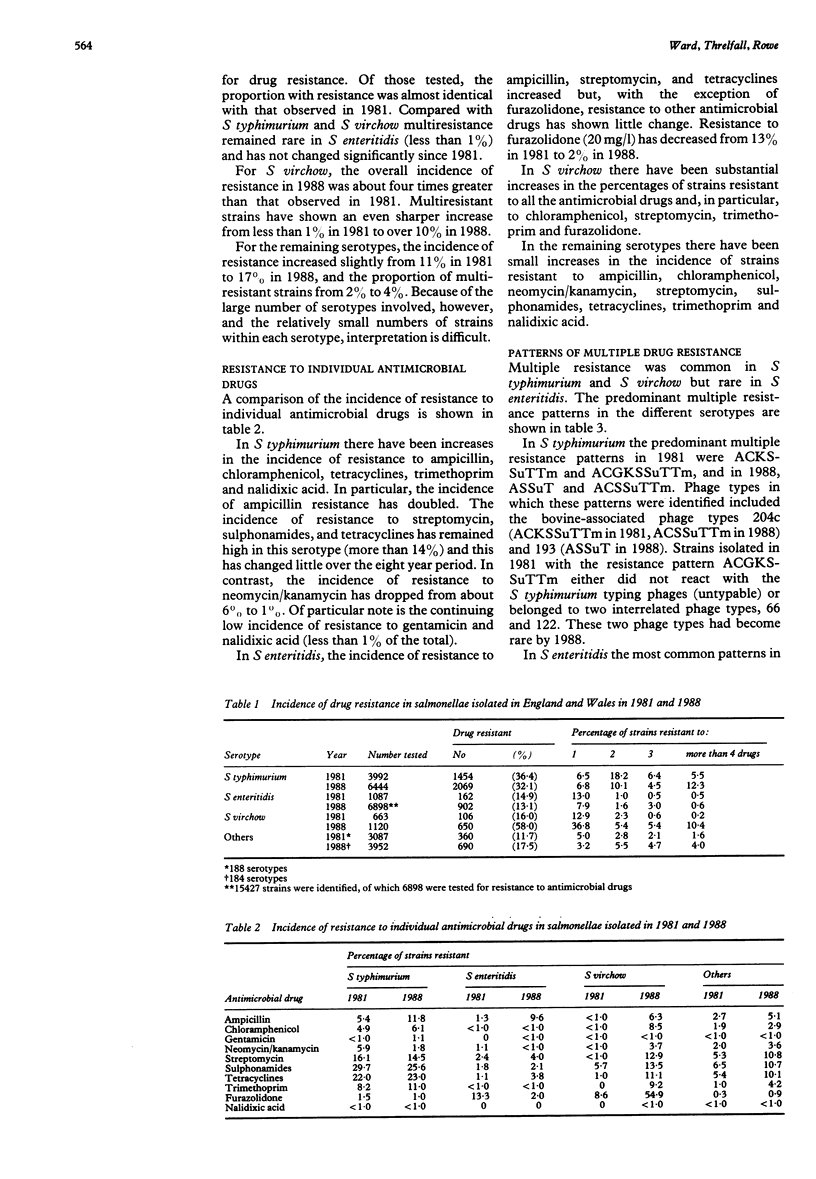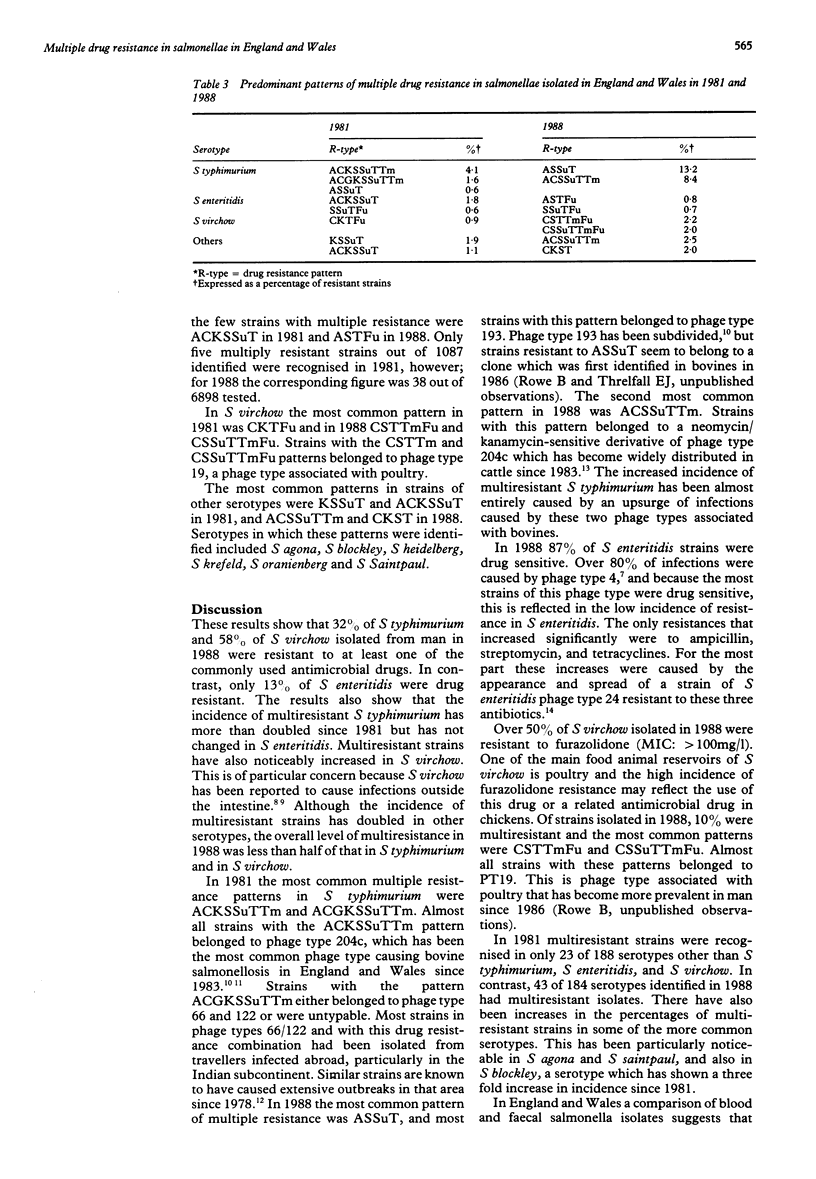Abstract
Each year from 1981 through to 1988 the most common serotypes isolated from man in England and Wales and identified at the Division of Enteric Pathogens were S typhimurium, S enteritidis, and S virchow. In 1981 these three serotypes accounted for 45%, 12%, and 7% of isolations. The remaining 35% comprised strains belonging to a further 188 different serotypes, none of which accounted for more than 1% of the total. In 1988 S typhimurium accounted for 24% of isolations, S enteritidis 57%, and S virchow 4%. The remaining 15% comprised strains of a further 184 serotypes. The resistances to the common antimicrobial drugs in non-typhoidal salmonellas isolated in England and Wales in 1981 and 1988 were reported with particular reference to resistance to four or more antimicrobial drugs (multiple resistance). For S typhimurium the overall percentage of resistant strains varied little, but multiple resistance more than doubled from 5% to 12%; in S enteritidis the incidence remained the same. In S virchow the percentages of strains resistant to all the antimicrobial drugs and in particular, to chloramphenicol, streptomycin, trimethoprim and furazolidone, rose from 0.2% to 10.4%. Salmonella enteritis in man is usually a self limiting disease and antimicrobial treatment is seldom required; but should spread beyond the intestine occur, effective antimicrobial treatment is essential. Under these circumstances a knowledge of the likelihood of resistances to commonly available drugs could be of considerable value to the clinician.
Full text
PDF



Selected References
These references are in PubMed. This may not be the complete list of references from this article.
- CALLOW B. R. A new phage-typing scheme for Salmonella typhi-murium. J Hyg (Lond) 1959 Sep;57:346–359. doi: 10.1017/s0022172400020209. [DOI] [PMC free article] [PubMed] [Google Scholar]
- Frost J. A., Rowe B., Ward L. R., Threlfall E. J. Characterization of resistance plasmids and carried phages in an epidemic clone of multi-resistant Salmonella typhimurium in India. J Hyg (Lond) 1982 Apr;88(2):193–204. doi: 10.1017/s0022172400070066. [DOI] [PMC free article] [PubMed] [Google Scholar]
- Frost J. A., Ward L. R., Rowe B. Acquisition of a drug resistance plasmid converts Salmonella enteritidis phage type 4 to phage type 24. Epidemiol Infect. 1989 Oct;103(2):243–248. doi: 10.1017/s0950268800030594. [DOI] [PMC free article] [PubMed] [Google Scholar]
- Mandal B. K., Brennand J. Bacteraemia in salmonellosis: a 15 year retrospective study from a regional infectious diseases unit. BMJ. 1988 Nov 12;297(6658):1242–1243. doi: 10.1136/bmj.297.6658.1242. [DOI] [PMC free article] [PubMed] [Google Scholar]
- Threlfall E. J., Rowe B., Ward L. R. Increase in prevalence of a neomycin/kanamycin-sensitive variant of S typhimurium DT204c in cattle in Britain. Vet Rec. 1987 Apr 11;120(15):366–367. doi: 10.1136/vr.120.15.366. [DOI] [PubMed] [Google Scholar]
- Ward L. R., de Sa J. D., Rowe B. A phage-typing scheme for Salmonella enteritidis. Epidemiol Infect. 1987 Oct;99(2):291–294. doi: 10.1017/s0950268800067765. [DOI] [PMC free article] [PubMed] [Google Scholar]
- Wilkins E. G., Roberts C. Extraintestinal salmonellosis. Epidemiol Infect. 1988 Jun;100(3):361–368. doi: 10.1017/s095026880006711x. [DOI] [PMC free article] [PubMed] [Google Scholar]


